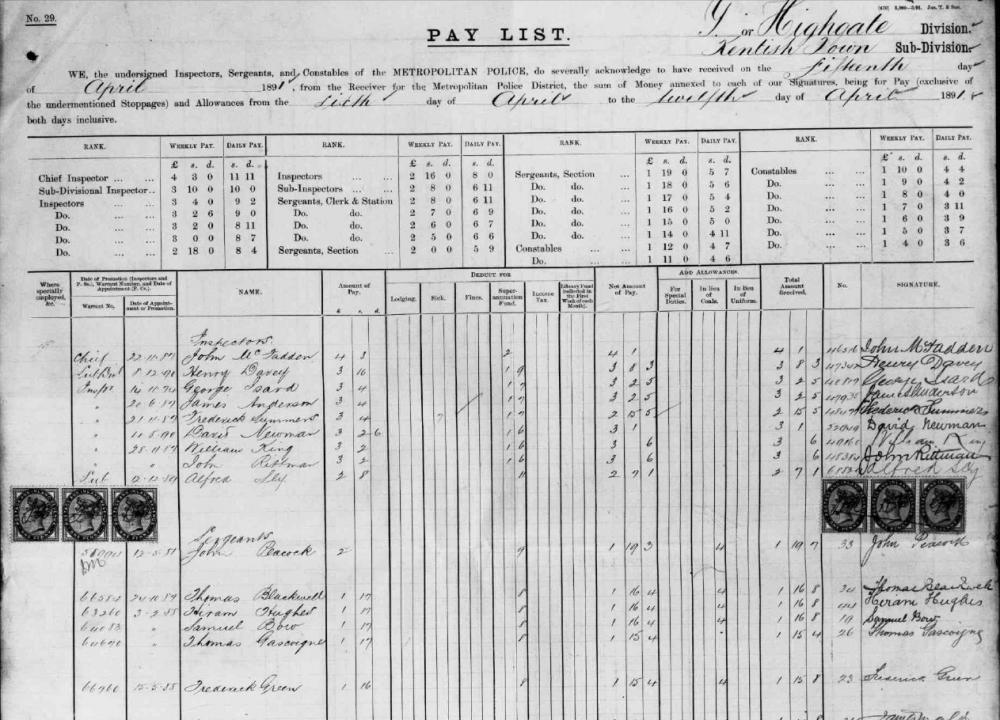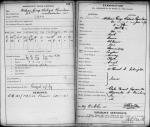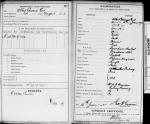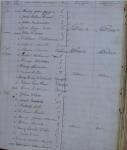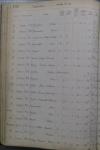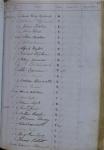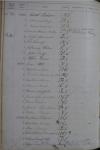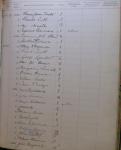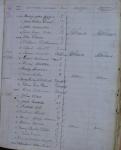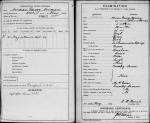-
Posts
276 -
Joined
-
Last visited
Content Type
Profiles
Forums
Blogs
Gallery
Events
Store
Everything posted by Odin Mk 3
-
I understand the only silver 1902 medal issued with the Police Ambulance Service reverse was awarded to A O MacKillar who was Chief Surgeon to the Metropolitan Police. The list of silver 1902 Coronation (Police) Medals issued to the Metropolitan Police and City of London Police (plus the unique PAS Medal mentioned above) was originally included in the excellent article written by John P Farmery entitled Jubilee and Coronation Medals: Police Issues 1887-1911. This article was printed in the Orders and Medals Research Society Miscellany of Honours No 7 (published 1985). The Miscellany of Honours were occasionally printed by the OMRS and were in addition to the normal Society's Journals. M of H No 7 is long out of print but second hand copies do turn up regularly at Medal and Militaria fairs for a few pounds. The whole article is a superb reference source for this series of medals and also shows how many bronze medals were awarded to each Met Division, tabled by rank (eg 1887 H Div 1 Supt, 1 Ch Insp, 17 Insp, 38 PS, 465 PC + CID Officers (1 Insp, 8 PS, 6 PC). To be honest having read the article is one of the main reasons why I first got interested in these medals. I normally buy any copies of the M of H No 7 I see at fairs if they are not too expensive; ultimately I end up passing them on to other collectors but before you ask sorry I don't have loads of spares at present. Final point - the article indicates there were no awards of silver medals to either the LCC Metropolitan Fire Brigade or the St John Ambulance Brigade.
-
Officers were allocated their division when they attested which was probably the day they joined the Met - they would then have gone to their allocated division immediately. I suspect the list of recipients for the 1897 (and other Police Jubilee / Coronation) Medals was probably taken from the weekly pay lists for each division. Therefore if you were on the pay list for the week the Jubilee occurred then you got the medal. There are a few pay lists for 1891 in the National Archives but I suspect there may more around somewhere. If there are anymore it would be interesting to know as they show which sub division the man was serving in. I have come across the odd medal to men who had actually been discharged just before the Jubilee / Coronation. It may be their name had not yet been deleted from the pay list. A sample of a list for Y Div Highgate, Sub Division Kentish Town is attached:
-

1887 Jubilee medal
Odin Mk 3 replied to Deelibob's topic in Great Britain: Mervyn Mitton's British & Colonial Police Forces
I've just checked and there should be some pension records for Davis at The National Archives - file reference is :- MEPO 21/18 which covers pension numbers 6501 - 7000 (period 1887 - 1888). These have not been digitised so you would require a Readers Ticket to access them. -

1887 Jubilee medal
Odin Mk 3 replied to Deelibob's topic in Great Britain: Mervyn Mitton's British & Colonial Police Forces
I think I may have found him There was an Inspector Davis of B Division who was pensioned 16/12/1887. The same man was in B Division as an Inspector in March 1885. That all fits with him definitely getting an 1887 Medal named as Insp B Div. Davis' Warrant Number was 46537. Unfortunately the Attestation Registers start at Warrant Number 51491 and the Discharge Registers started in March 1889 so neither of those are able to help. Also he is way too early to have a service sheet (start at 74201). My only other information source are some Law Directories. In 1882 the Met Police entries show that in B Division there was an Inspector Jeffery Davis which I would suggest is the same man. So putting it all together we have Inspector Jeffery Davis, Warrant Number 46537, Pensioned 16/12/1887. By the way in 1882 B Division was called Westminster. The Division name was later changed to Chelsea although I don't have an exact date for that. Not very much I'm afraid and I can't find his name in any Old Bailey cases around the 1880s. There might be some pension stuff for him but that would require a visit to The National Archives at Kew to check that out (not available on line). -
Sorry I haven't picked up on this thread before. Going back to the original photo of Supt William Hammond - he was promoted to Supt in March 1893 and served in G Division (Finsbury). He was still serving G Div in 1905 and the men are all wearing the 1887 Jubilee Medal with 1897 bar plus 1902 Coronation Medal (some have additional medals - I can spot at least one Khedive's Star). He had probably retired by 1910 as I can't find him in the Police Directory. So yes the photo was taken post 1902. I have checked the complement of senior officers for G Div: In 1899 there was 1 Supt, 1 Chief Insp, 3 Sub Divisional Inspectors, 1 Local (Detective) Inspector and 16 Inspectors. In 1905 there was 1 Supt, 1 Chief Insp, 3 Sub Divisional Inspectors, 1 Local (Detective) Inspector and 16 Inspectors. So you only have part of his senior officers here, possibly one sub division. I think the officer with the crown is the Chief Inspector and the man with the star on his collar is one of the Sub Div Inspectors. The Local Insp is the man in plain clothes and the other seven Inspectors could be all from one of the larger sub divisions. At that time a Supt wore a Crown plus a Pip on his shoulder which would explain the Crown for a Ch Insp. It may have been a retirement type photo for Hammond as he looks pretty ancient in this photo.
-
I'm afraid I don't know anymore the campaign either. However here is the somewhat battered group to Pte / ACI Bert Glandfield / Glanfield. It's a pity they didn't put a rim on the early GSMs as they get a lot of contact wear from the adjacent medals. In WWI Glandfield served with MGC then (name spelt Glanfield) with KOYLI for Iraq. He then transferred to the RAF for S D Iraq and NWF. Unfortunately I don't have his RAF LS Medal.
-
Below is a copy of the service sheet for Insp W Burnham the younger. It shows he was promoted to PS in CID which suggests to me that he was already a detective constable and accounts for why he did not have to move from F Div when he was promoted to PS. Uniformed officers normally changed division on promotion but detectives seem to be able to get promoted without moving. He subsequently moved to Scotland Yard (CO Div) and then his later promotions involve moving to pick up the higher grade posts.
-
I believe this are actually only two groups of police medals here: Inspector William Burnham was Warrant Number 49393 joined 03/02/1868 and was pensioned 28/12/1891 as an Inspector serving in G Div (he was actually a Sub Divisional Inspector which is a slightly higher grade and would have been in charge of several Police Stations within G Div ). He would have earned the 1887 Medal as an Insp in G Div. He then re-joined as Warrant Number 82296 as a pensioner for the 1897 Jubilee (adding the bar to his medal) and re-joined again in 1902 as Warrant Number 1719 for the 1902 Coronation - this medal is named to him as an Insp in T Div (this is the first medal in the third group above). He had probably moved a bit further out of London by then and fell within a different Police district. The second William Burnham joined with the Warrant Number 77180 as a PC in F Div 23/11/1891 - he received the 1897 Medal as a PC in F Div and the 1902 Coronation Medal as a PS in F Div. He then earned the 1911 Coronation Medal as an Inspector (second medal in the third group). He retired 29/12/1919 as a Divisional Detective Inspector in G Div - a similar level to a Sub Divisional Inspector. There will be a service sheet for this man in the MEPO 4 series of records. I would hazard a guess that these medals are Father and Son groups and a census check would probably confirm that. More importantly I cannot find a third Inspector W Burnham in the Met at this time so that adds support to my claim that there are only two policemen here and not three. For reference F Div = Paddington, G Div = Finsbury, T Div = Hammersmith. I can through no light on the third man I'm afraid. It's outwith my area of interest. I have come across the earlier police medals that have been plated in silver but some of these bronze Jubilee Medals that haven't been polished still have their original finish which can almost look like gilt.
-
You are in luck Timo There was actually only one PC W Kerr who earned the Met 1911 Coronation Police Medal - PC William Edward Kerr who had the Warrant Number 94803 and joined 29/07/1907 as a PC in W Division (Clapham) and left 06/11/1931 as a PC serving in L Division (Lambeth). He was actually pensioned out on health grounds (before completing 25 years service). I have located his service sheet, attestation and discharge register entries and will forward them to you
-
Paul They are the same man - Albert (Edward) Gent who joined the Met 1 Aug 1892 with the Warrant Number 77942 and became a PC in M Division (Southwark). He was pensioned 30 Dec 1918 and was still serving as a PC in M Division when he retired. His service sheet is attached below. He was a Brewer's Drayman before joining the Police. Unfortunately he is also entitled to a 1902 Coronation Medal (PC M Div) which appears to be missing
-
You also asked me about a 1911 Medal to PC G Ely He is in fact George William Ely whose Warrant Number was 84426 and he joined as a PC in H Div (Whitechapel) 19/09/1898 and was pensioned 24/09/1923 as a PC in 1st Div (Woolwich). He also served in 3rd Div (Devonport Dockyard) His full entitlement is 1902 Coronation Medal (PC 3rd Div) and 1911 Coronation Medal (PC - was then in 1st Div). His service sheet is attached
-
PC John Davies joined 17/11/1884 as a PC in R Division (Greenwich) with the Warrant Number 69930. He is too early for a service sheet but his attestation entry is attached. He was pensioned 22/11/09, still serving as a PC in R Division. The discharge register page is attached. He received a Class 2 Certificate of Conduct (which I think still meant Very Good - but note this numbering system was soon changed when the marking became Exemplary, 1 = Very Good, 2 = Good, etc) Davies had the collar number 160R when he retired and appears to have spent his whole career in the same division. I have no other information on the officer I'm afraid.
-
You also have asked about the following medals: 1887 Medal with 1897 Bar to PC Henry Foster Y Div 1887 Medal with 1897 Bar plus 1902 Medal to PC J Davies R Div Also you identified that Foster joined 26/08/1872 and was soon dismissed before re-joining again later that year. I will start with Henry James Foster. He was too early for a service sheet but there are attestation and discharge register entries for him. These show he initially joined 26/08/1872 as a PC in E Division (Holborn) with the Warrant Number 55737 - attestation register entry is included below. On 16/11/1872, 7 PSs and 173 PCs refused to go on duty - the men were from D Div (Marylebone), P Div (Camberwell), E Div (Holborn) and T Div (Kensington later called Hammersmith); this was in support of PC Goldsmith the secretary of a pay negotiation committee. All the officers were sacked but two weeks later most of these men were re-instated. They were fined a week's pay and the PSs were demoted. They were also required to re-attest and sign the oaths again. Foster must have been one of these men as he re-attested on 29/11/1872 as a PC in E Div with a new Warrant Number 56233. If you compare the two attestation signatures they are identical (see below). I don't have any further information on him except when he was discharged (he probably resigned and took his gratuity) 6/09/1897. He received a Class 3 Certificate of Conduct = Good. (Discharge Register entry is included below). When he left he was a PC in Y Div (Highgate). Unfortunately I don't have any Police Orders information on him so I can't tell you when he transferred from E to Y Div.
-
The Pension Papers I have seen from the NA have the man's home address and his next of kin shown. The men who re-joined in 1902 are shown in the Police Orders. HOWEVER there is a slight complication. Men started to re-join in June for this event but the Coronation of Edward VII was delayed until August because the King had appendicitis. There are further men who re-joined in August just prior to the actual Coronation. Some men who joined in June resigned and didn't return in August, a few were actually dismissed and some left but then re-joined again in August (this time with a different number). An example of the latter is PC George Gillett D Div who re-joined as 1221 on 17th June 1902. He then re-joined D Div again as 2025 on 5th August 1902. He had previously served as 61064 from Jan 1877 to Jan 1902 and was pensioned from D Div. PC Henry Chapman was a bit easier to follow - he re-joined just once on 13/06/1902 going to K Div as Warrant No 841. Possibly the men who re-joined twice had other jobs and returned to them during the period June to August, whereas those who worked through may have been unemployed and used the opportunity to earn a few more pounds. The 1901 Census may be of use to establish if Henry Chapman was working or not (assuming you can find him on the census).
-
Possibly and there is a firm K Div connection there. I just wonder as he later moved to D Division I would have thought he possibly moved his home so that he was closer to the Marylebone area. I have usually found that when men re-joined for Coronations etc they tended to go back to their last divisions simply because many were still living in the area where they were stationed before they left the force. Unfortunately there are too many officers named Henry Chapman to be absolutely sure which one we are dealing with here.
-
I identified above a Henry Chapman (841) who re-joined in 1902 for the Coronation of Ed VII and received the medal as a PC in K Div. I found there was a PC Henry William Chapman (65020) who joined 1/11/1880 as a PC in S Div (Hampstead) - the attestation page entry is shown below. When he was discharged 09/01/1894 he was serving as a PC in K Div (Bow) and the Discharge Register shows his name incorrectly as William Henry Chapman. He received a Class 4 certificate of conduct which can be taken as 'no comment' (ie indifferent). I suspect he may have left on health grounds as many officers were not fit enough to perform their duties properly. However some of these men did come back later for the subsequent royal events as lining the route was hardly strenuous. The discharge page is included below. He would have been entitled to an 1887 Medal but I cannot determine which division he was in for June 1887. I then found a man who re-joined in 1897 for the 60th Jubilee of Queen Victoria. These men were given new numbers and are shown in the Police Orders as all being assigned to CO Div (Scotland Yard). In reality they signed the attestation register again and were allocated to different divisions. Henry Chapman (83032) went to K Div and the attestation register entry is included below. I have also included the two signatures together - if you compare the form of the C they are identical - I think this is the same man. I believe he then re-joined again in 1902 as 841 and earned the 1902 Medal named as PC K Div which you mentioned. The men who came back in 1902 were not required to re-attest so we don't have a third signature to compare. I can find no other suitable individual who I can link to K Div so I think 65020 / 83032 / 841 are all the same man
-
Here are the Attestation and Discharge Register entries for Whitehead. When he attested he signed the register so that is a copy of his actual signature. The Discharge Register gives an indication of his performance in the Police as men who left (unless they were dismissed) were awarded a Certificate of Conduct - Whitehead got a Class 1 certificate which I think at that time was Excellent. Shortly after this they introduced an Exemplary mark and Class 1 became Very Good. Interestingly on the same page of the discharge register is the dismissal of John Syme (shown as a Station PS). He had been an Inspector and was demoted to Stn PS for insubordination. He complained to the Commissioner about his treatment and was then dismissed from the force. Syme went on to form a Police Union which was promptly banned by the Commissioner. The Union subsequently replace Syme who had been the Union Secretary. Without him they were able to mount a successful strike in 1918 which lead to significant improvements in Police pay and conditions. However when a further strike was held in 1919 it was poorly supported and all Met Officers who took part were dismissed (just over 1000 men). The Police Federation was formed in that year and took on the role of the Police Union.
-
First of all Abberline joined the Met 05/01/1963 and retired 08/02/1892 as a Chief Inspector in CO Div (Commissioner's Office Scotland Yard). His Warrant Number was 43519. He would have earned the 1887 Medal and in June 1887 he was an Inspector in H Div - so his medal should show this information. He moved to CO Div 25/07/1887 and was promoted to Ch Insp 22/12/1890 (he remained in CO Div until he retired). George Whitehead (69938) joined 22/12/1884 as a PC in 3rd Div (Devonport) and was pensioned 31/01/1910 as a PC in P Div (Camberwell) earning his 1887 & 1897 bar and 1902 Medals in P Div. No service sheet for him but I will dig out the attestation and discharge register entries for you this weekend. Norman Norman (79602) joined 21/05/1894 as a PC in T Div (Hammersmith) and was pensioned as a PC in 3rd Div (Devonport) 11/07/1921. He earned his 1897, 1902 and 1911 Medals in 3rd Div. There is a service sheet for him which I will dig out this weekend. PC Henry Chapman was indeed a pensioner who came back in 1902 for the 1902 Coronation and served in K Div (Bow). He was allocated a new Warrant Number 841 for the short time he served in 1902. I have tracked down an individual who appears to have left in 1894 (from K Div) and then re-joined for 1897 (in K Div) so I suspect this is your man who would have also earned an 1887 Jubilee Medal with 1897 bar. I will sort out the 'evidence' for you - it is all rather complicated as the Discharge Register shows his name as William Henry instead of Henry William.
-
Unfortunately because the 1911 Police Coronation Medals do not show the man's division it is often a problem trying to identify the man (there are 22 PCs called G Smith who received this medal). In the case of PC C Scott there are three possible candidates - all called Charles Scott. Warrant No 71309 who joined 23/02/1886 as a PC in N Division (Islington) who was pensioned 27/03/1911 and was still a PC in N Division. He re-joined N Div in June 1911 just for GV's Coronation under a new number O2626. He also earned an 1887 Jubilee Medal with the 1897 Bar and a 1902 Coronation Medal - both of these would show him in N Div. Warrant No 99650 who joined 09/01/1911 as a PC in R Division (Greenwich) who was pensioned 25/05/1936 and was still a PC in R Division. He would have also received the 1935 Jubilee Medal. Warrant No 100109 who joined 15/05/1911 as a PC in P Division (Camberwell) and who left with a gratuity 28/10/1919 and was then serving as a PC in N Div. This man also served with the forces in WWI and may have War Medals. It is difficult to determine which of these men's medals you have there and that is a common problem with single 1911 Medals to men with more common surnames.
-
The other man is William Alcock who joined the Met 23/04/1894 with the Warrant Number 79482. He was pensioned 29/08/1921 after 25 years service. Unfortunately he is also entitled to the 1897 Medal (PC 2nd Div - Portsmouth Dockyard) and 1902 Medal (PC W Div - Clapham). However when he retired he was an Inspector. Also note that he was actually a Station Sergeant in 1911 (SPS) but that rank is not shown on medals - just PS. I have attached his service sheet which gives his moves and promotions. He was a butcher before joining the police. For information: Y Div = Highgate Ports (2nd) Div = Portsmouth Dockyard W = Clapham R = Greenwich P = Camberwell T = Hammersmith Hope that helps. For most of these medals there is plenty of information at the National Archives - a lot of which can be accessed remotely and I have most of it stored on my (spare) hard disk.
-
Re the trio - Frederick Harding joined the Met as a PC in G Div (Finsbury) 22/06/1896 with the Warrant Number 81357. He later transferred to L Div (Lambeth) before transferring to M Div (Southwark). He left the force 27/06/1921 - pensioned after 25 years service. His full police medal entitlement is the group you have. I have attached his service sheet which shows the dates of his moves etc plus his details on joining - previously employed by a railway company. Note his 1911 medal is as a PS (Sergeant) - this is not shown on his service sheet. However from my other notes taken from the Police Orders I can tell you he was an acting PS at the time of the 1911 Coronation - so the rank of PS is shown on his medal. In fact 23/05/1911 - 24/02/1921 he was an Acting PS in L Div. When he moved to M Div he reverted to PC again. (Note for earlier awards the lower rank is shown on medals ie an acting PS in 1902 would have his medal named PC). Hope that helps - will now look for your other man
-
I am aware that printed rolls for the Royal Marine recipients of the South Atlantic Medal plus the NGS bars Near East and Arabian Peninsula / GSM 62 bars Borneo, Malay Peninsula and (I think) South Arabia are around. However these have not officially been released and must have been 'leaked' somehow. The NGS (RM) roll for Near East was actually issued as a booklet by Jade Publications quite a few years ago. However the NGS roll for Palestine 1936-39 is still not yet in the National Archives (even though the equivalent Army Medal Roll - GSM is there). So I doubt the SAM rolls for the Parachute Regiment have been formally released yet and won't be for quite a few years. The only relatively recent rolls that I am aware of are those for merchant navy recipients - this includes the SAM roll. It can be found on-line at the Maritime and Coast Guard Agency website - www.dft.gov.uk/mca Open up a new window and go to the site, then type Medals in the search box Click on the entry 'Register of Seaman and Shipping' Then click on 'List of post war medals issued' A spread sheet can be opened up which covers medal recipients from Palestine 1945-48 to the Falklands and GSM bar Gulf
-
David Although the Police Almanac does show some Inspectors in a number of the Police Forces it does not include all of them. In fact for some forces it doesn't go down to that level (eg Met Police). Attached is the entry for Dewsbury from the Police Almanac 1951. It indicates all the police stations and those with an * have a Sergeant in charge (which to me implies the others have an Inspector)
-
Given the address I thought it might be Dewsbury which existed as a force until 1968 when it became part of West Yorkshire Police. The 1953 Coronation Roll shows him as an Inspector in - CB DW which I assume could be County and Borough Force Dewsbury (see attached). I looked at the 1951 Police Almanac but couldn't find Shaw in the West Riding forces. That shows Dewsbury Division under Yorkshire West Riding (even though it was then a separate force).



